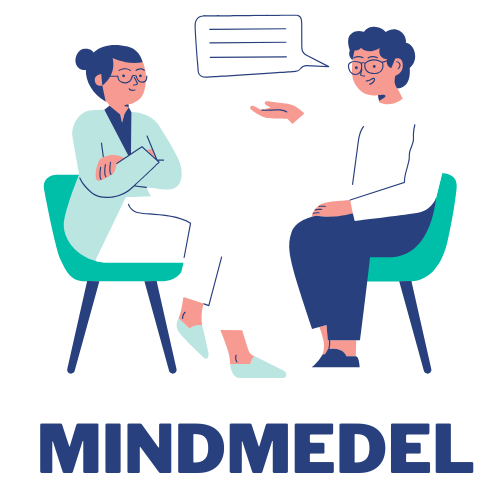Implicit vs Explicit Bias: Uncovering the Hidden Influences
Bias—whether implicit or explicit—shapes the way we perceive and interact with the world. It affects our decisions, behavior, and even the systems we operate within, often without us realizing. Understanding the difference between these two types of bias is essential for fostering equity and inclusivity in various aspects of life, such as workplaces, healthcare, and interpersonal relationships.
Key Takeaways:
- Implicit bias operates unconsciously, while explicit bias is conscious and deliberate.
- Both biases influence actions and decisions, often without awareness.
- Implicit bias is more difficult to detect and control but equally impactful.
- Recognizing bias helps reduce stereotypes, prejudice, and discrimination.
- Practical strategies exist to address and reduce both types of biases.
What is Implicit Bias? (The Unconscious Kind)
Implicit bias refers to automatic, unconscious attitudes or stereotypes that subtly influence understanding, actions, and decisions. Unlike explicit bias, implicit bias operates beneath the surface, making it harder to recognize or control.
The Role of Unconscious Bias and System 1 Thinking
Implicit bias is closely tied to System 1 thinking, which governs our fast, automatic, and intuitive decision-making processes. This system, though efficient, often relies on cognitive shortcuts, leading to unconscious stereotypes and assumptions.
Examples of Implicit Bias
- Associating leadership qualities more frequently with men than women.
- Assuming certain ethnicities excel in specific professions.
Measuring Implicit Bias: The Implicit Association Test (IAT)
The Implicit Association Test (IAT) is a widely used tool to uncover unconscious biases by assessing automatic associations between concepts (e.g., race or gender) and evaluations (e.g., good or bad). It has been instrumental in helping individuals identify their hidden prejudices.
What is Explicit Bias? (The Aware Kind)
Explicit bias encompasses conscious, deliberate attitudes or beliefs about a person or group. These biases are openly expressed and easier to identify because they operate within our conscious awareness.
The Role of System 2 Thinking
Explicit bias stems from System 2 thinking, which is slower, deliberate, and analytical. This system allows individuals to articulate their biases and act on them intentionally.
Examples of Explicit Bias
- Stating a preference for one group over another.
- Creating policies that explicitly favor certain demographics.
| More to Explore for Your Interest: You will also Enjoy Reading | |
| 1 | Recognizing the Signs of a Covert Narcissism |
| 2 | Is Love an Illusion or a Reality We Create |
| 3 | Child Psychology Masters Programs 2025: Unbelievably Helpful Insights |
Key Differences Between Implicit and Explicit Bias
Awareness and Control
| Feature | Implicit Bias | Explicit Bias |
| Awareness | Unconscious and automatic | Conscious and deliberate |
| Control | Difficult to control | Easier to control |
| Expression | Subtle actions or behaviors | Overt words or actions |
| Example | Gender bias in hiring | Racially biased hiring policies |
Impact on Behavior
Implicit biases subtly influence decisions without individuals realizing their effect. For instance, healthcare professionals might unconsciously prescribe less aggressive treatment to certain demographic groups. Explicit biases, though easier to spot, can be equally harmful, such as openly discriminatory hiring practices.
Real-World Examples of Implicit Bias
Implicit Bias in the Workplace
- Favoring candidates with names perceived as more “mainstream.”
- Unequal allocation of projects based on stereotypes about gender or race.
Implicit Bias in Healthcare
- Women with heart attack symptoms receiving less aggressive treatment than men.
- Racial disparities in pain management, with certain groups less likely to receive adequate pain relief.
Other Examples
- Teachers unconsciously spending less time engaging with students from specific backgrounds.
Real-World Examples of Explicit Bias
Explicit Bias in the Workplace
- Refusing to hire individuals of a certain ethnicity.
- Implementing policies that favor one gender over another.
Explicit Bias in Healthcare
- Openly discriminatory remarks about patients’ ability to follow medical advice based on race or socioeconomic status.
Other Examples
- Publicly endorsing stereotypes about particular racial or religious groups.
Why Does This Matter? (Impact and Importance)
Influence on Society
Biases, both implicit and explicit, contribute to systemic inequalities, perpetuating stereotypes and hindering societal progress. For example, racial and gender biases can affect access to education, employment, and justice.
Effects on Individuals
Stereotypes and prejudice can damage self-esteem, limit opportunities, and negatively impact mental health, creating barriers to personal and professional growth.
Broader Implications
Biases in critical areas like healthcare, education, and law enforcement can perpetuate discrimination, reinforcing societal inequities.
How to Reduce Implicit Bias (Practical Steps)
Awareness and Self-Reflection
- Take the Implicit Association Test (IAT) to identify hidden biases.
- Reflect on your own attitudes and assumptions.
Education and Exposure
- Learn about stereotypes and their impact on decision-making.
- Engage with diverse communities to challenge preconceived notions.
Strategies to Reduce Implicit Bias
- Practice mindfulness to slow down decision-making processes.
- Implement structured, criteria-based decision-making frameworks.
- Minimize reliance on System 1 thinking.
Implicit Bias Training
Many organizations offer implicit bias training programs to help employees recognize and mitigate unconscious biases. These programs often include workshops, role-playing exercises, and discussions to foster a more inclusive workplace culture.
How to Address Explicit Bias (Confronting Prejudice)
Advocacy and Education
- Speak up against explicit discrimination.
- Provide resources and training to educate others on the harms of explicit bias.
Policy Changes
- Enforce strict anti-discrimination policies in workplaces and institutions.
- Promote diversity and inclusion through intentional recruitment and retention efforts.
Implicit vs. Explicit Bias: Examples and Solutions
| Scenario | Implicit Bias Example | Explicit Bias Example |
| Job Interview | Assuming men are better leaders. | Refusing to hire candidates of a certain ethnicity. |
| Healthcare | Prescribing less aggressive treatment. | Denying care based on personal prejudice. |
| Education | Spending less time with certain students. | Denying opportunities based on race. |
How to Overcome Implicit Bias: A Roadmap
Personal Actions
- Engage in self-education about biases and their effects.
- Regularly review decisions to ensure fairness and equity.
Organizational Actions
- Invest in implicit bias training programs.
- Use anonymized resumes during recruitment to minimize bias.
Community Actions
- Foster inclusive environments in schools and workplaces.
- Support legislation aimed at reducing systemic discrimination.
Recent research findings on implicit vs explicit bias:
- The Role of Negative Stereotypes in Explicit Prejudice
A 2023 study analyzed data from two large national datasets to explore the relationship between implicit negative affect, explicit prejudice, and negative stereotypes. The findings suggest that individuals with higher implicit negative affect are more likely to exhibit explicit prejudice if they also endorse negative stereotypes about certain groups. Conversely, those without such stereotypes may report less explicit prejudice despite implicit biases. apa.org
- Implicit Bias in Maternal Healthcare
A 2024 study revealed that Black mothers in New Jersey are 25% more likely to undergo unnecessary C-sections compared to white mothers. The research indicates that both implicit and explicit biases among healthcare providers contribute to this disparity, highlighting the need for interventions to address these biases in medical practice. parents.com
- Implicit Bias in Emotion Recognition
Research published in 2023 examined how implicit and explicit biases affect the recognition of emotions in children’s faces. The study found that higher levels of implicit or explicit bias decreased the likelihood of misperceiving White children as angry, while not significantly affecting perceptions of Black children. These findings have implications for addressing biases in educational and caregiving contexts. apa.org
- Implicit Bias in Law Enforcement
A comprehensive review explored how implicit and explicit biases contribute to stereotypes that adversely affect Black males in law enforcement contexts. The study argues that the implicit nature of these stereotypes makes them challenging to recognize, thereby perpetuating systemic issues within the justice system. apa.org
- Unconscious Bias in Medical Decision-Making
Building on a 2003 Institute of Medicine report, recent research has delved into how both explicit and implicit biases influence healthcare providers’ decisions. Factors such as the use of patronizing language and assumptions about patient compliance have been identified as areas where bias can adversely affect patient care, underscoring the need for comprehensive bias training in medical education. apa.org
These studies underscore the pervasive influence of both implicit and explicit biases across various sectors, including healthcare, law enforcement, and interpersonal interactions. Addressing these biases is crucial for fostering equity and inclusivity in society.
Conclusion
Bias, whether implicit or explicit, impacts all aspects of life, from personal interactions to systemic structures. By recognizing these biases and actively working to address them, we can create a more inclusive, equitable society. Remember, small changes in awareness and behavior can lead to significant progress.
Do you agree or disagree with this article? We’d love to hear your thoughts! Drop a comment below and join the conversation!
Frequently Asked Questions
Q No. 1: What is the difference between explicit and implicit bias?
Answer: Explicit bias is conscious and openly expressed, while implicit bias is unconscious and subtly influences our perceptions and actions. Explicit bias is known, implicit bias is often hidden.
Q No. 2: What is an example of implicit bias?
Answer: A common example is unconsciously associating certain groups with specific stereotypes, like assuming a man is more qualified for a leadership role than a woman, even with identical resumes.
Q No. 3: What is the difference between explicit and implicit behavior?
Answer: Explicit behavior is intentional and deliberate, driven by conscious thought. Implicit behavior is automatic and subconscious, often influenced by implicit biases we may not even be aware of.
Q No. 4: What is explicit and implicit bias in social work?
Answer: In social work, explicit bias might involve discriminatory practices based on race or class. Implicit bias can lead to subtle but harmful actions, like spending less time with certain clients due to unconscious stereotypes.
People also search for
Query No. 1: Implicit Bias
Answer: Implicit bias refers to unconscious attitudes or stereotypes that influence decisions and actions without awareness. These biases develop through social conditioning and affect hiring, healthcare, and daily interactions. Recognizing implicit bias helps promote fairness and reduce discrimination in various settings.
Query No. 2: Implicit vs Explicit Bias Examples
Answer: Implicit bias example: A hiring manager unconsciously favoring applicants with familiar-sounding names. Explicit bias example: A company openly preferring one gender for leadership roles. Both biases shape behaviors, but explicit bias is intentional, while implicit bias operates unconsciously.
Query No. 3: Implicit vs Explicit Bias vs Unconscious Bias
Answer: Implicit bias is unconscious but influences behavior. Explicit bias is deliberate and acknowledged. Unconscious bias encompasses all biases formed without awareness, including implicit biases. Understanding these distinctions is key to addressing workplace discrimination and social inequities.
Query No. 4: Implicit vs Explicit Bias Psychology
Answer: Psychology explains implicit bias as stemming from subconscious associations formed through experience. Explicit bias involves conscious thoughts and prejudices. Implicit Association Tests (IAT) reveal hidden biases, helping individuals recognize and mitigate discriminatory behaviors.
Query No. 5: Implicit Bias Examples
Answer: Examples include assuming men are better leaders, expecting certain ethnicities to excel in specific fields, or treating customers differently based on race. Implicit biases shape decisions without individuals realizing their impact.
Query No. 6: Confirmation Bias
Answer: Confirmation bias occurs when people seek information that supports their existing beliefs while ignoring contradictory evidence. This cognitive bias affects decision-making in politics, science, and personal judgments.
Query No. 7: Conscious Bias Examples
Answer: Conscious bias includes openly preferring one group over another, enforcing discriminatory hiring policies, or making derogatory statements based on race, gender, or religion. These biases are intentional and often lead to systemic discrimination.
Query No. 8: Complicit Bias Example
Answer: Complicit bias occurs when individuals passively allow bias or discrimination to continue. Example: A manager witnessing unfair treatment but staying silent instead of intervening, reinforcing workplace inequality.







